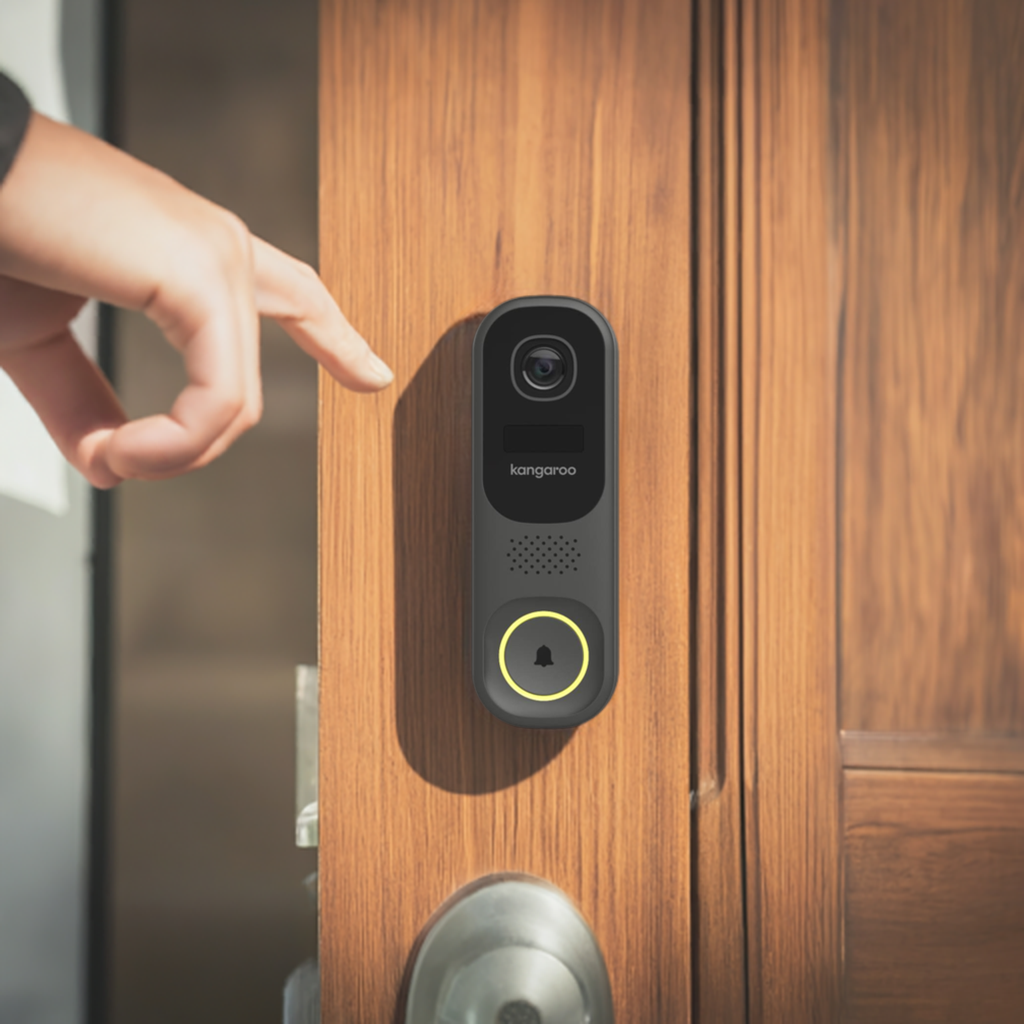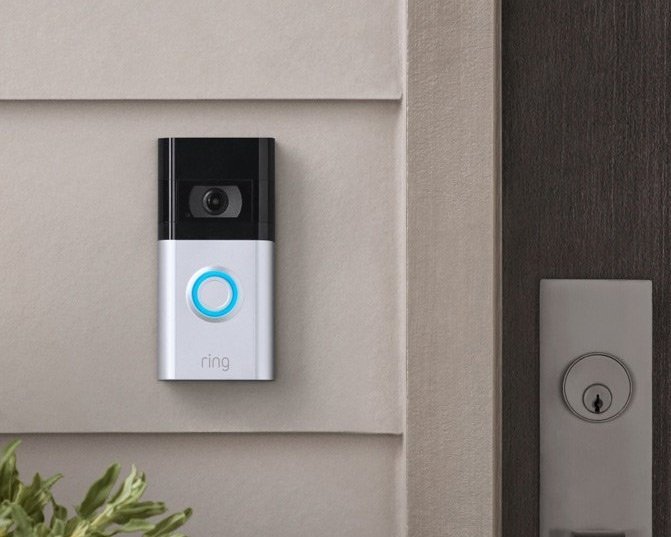The Ring of Security: A Guide to Doorbells with Chimes in Home Automation
Doorbells and chimes are no longer confined to a simple "ding-dong." Today, they play a vital role in your home security symphony. From wired doorbells with classic chimes to cutting-edge video doorbells with wireless chimes, the options are plentiful. Let's explore the world of doorbells and chimes to help you find the perfect melody for your home's security needs.
The Core Players:
Doorbell Chime: This is the unit that produces the chime sound, alerting you to visitors at your front door. It can come in wired (wire doorbell chime) or wireless (wireless doorbell chime) options.
Doorbell Button: The push button on your front door that visitors press to announce their arrival.
Video Doorbell: A doorbell with a built-in camera, allowing you to see who's at your door remotely through a smartphone app (e.g., Kangaroo, Ring Video Doorbell, Blink Video Doorbell, Google Nest Doorbell).
Smart Doorbell: A doorbell that integrates with your smart home system, offering features like two-way communication, motion detection, and automated actions. Popular options include Ring Doorbell, Nest Doorbell, Broan Nutone Doorbell.
Wired vs. Wireless:
When selecting a doorbell system, one of the key decisions involves choosing between wired and wireless options. Each type offers distinct advantages and considerations:
Wired Doorbells:
Traditional and Reliable: Wired doorbells have been the standard for decades, known for their dependable performance. They utilize low-voltage wires (typically 16 volts) to connect the doorbell button to a chime box located inside your home. This wired connection ensures consistent power and eliminates concerns about battery life.
Installation: While some homeowners find wired doorbell installation straightforward, it might require professional assistance, especially for complex setups or existing homes without pre-installed wiring.
Cost: Wired doorbells are often more affordable than their wireless counterparts, especially when considering long-term battery replacements for wireless models.
Examples: Kangaroo Video Doorbell, Honeywell Home Wired Doorbell Kit, Heath Zenith Wired Door Chime Kit
Wireless Doorbells:
Convenience and Flexibility: Wireless doorbells offer a hassle-free installation process, making them ideal for renters or those who prefer to avoid dealing with wires. They are battery-powered, eliminating the need for complex wiring configurations.
Battery Life and Signal Strength: Battery life can vary depending on usage frequency and features like video recording. It's crucial to choose a doorbell with a long-lasting battery and consider the option of rechargeable batteries for eco-conscious consumers. Additionally, signal strength between the doorbell and chime unit can be a factor, especially in homes with thick walls or large spaces.
Cost: Wireless doorbells often have a higher upfront cost compared to wired models. However, the long-term cost can be comparable depending on the chosen battery type and replacement frequency.
Examples: Kangaroo Photo/ Video Doorbell, Ring Video Doorbell, Nest Hello Doorbell, SimpliSafe Wireless Doorbel.
Top-Ranked Wireless Video Doorbell Cameras
Choosing the right wireless doorbell with a camera can significantly enhance your home’s security and convenience. Here are some of the top-ranked models that stand out for their features, performance, and user satisfaction:
1. Kangaroo Video Doorbell with a free Doorbell Chime
The Kangaroo Video Doorbell offers a sleek design combined with essential features for modern home security. It provides real-time video feeds and two-way audio, allowing you to communicate with visitors remotely. With motion detection and night vision capabilities, this smart doorbell ensures you can monitor your front door day or night. Its integration with smart home systems makes it a versatile choice for tech-savvy users.
2. Nest Doorbell (Google Nest Doorbell)
The Google Nest Doorbell, formerly known as the Nest Doorbell, is renowned for its high-definition video quality and advanced features. It boasts a wide field of view, ensuring that you capture a broad area around your front door. The doorbell camera includes motion detection and night vision, providing clear footage in various lighting conditions. Integration with Google’s smart home ecosystem allows for seamless operation and voice control.
The Ring Video Doorbell is a popular choice for its robust performance and comprehensive features. With options for both wired and wireless setups, it offers installation flexibility. The Ring doorbell includes motion detection, night vision, and a wide field of view, ensuring you capture detailed footage of anyone approaching your door. Its compatibility with Ring’s broader smart home system allows for enhanced security and convenience.
Blink’s Video Doorbell is known for its user-friendly setup and reliable performance. It provides clear video quality and two-way audio, allowing you to interact with visitors through the doorbell camera. With features like motion detection and night vision, it ensures you have a secure view of your front entrance at all times. The Blink Video Doorbell integrates smoothly with Amazon’s Alexa for voice-controlled functionality.
The Arlo Video Doorbell stands out with its high-definition video resolution and wide field of view. It offers advanced features such as motion detection, night vision, and a built-in siren for added security. The doorbell camera provides clear, detailed video feeds, and its integration with Arlo’s smart home ecosystem allows for enhanced security and automation options.
Quick Comparison Guide
| Model | Key Features | Ideal For |
|---|---|---|
| Kangaroo Video Doorbell | Affordable, easy installation, motion detection, night vision, and free chime. | Budget-conscious buyers looking for a simple DIY setup |
| Nest Doorbell (Google) | High-definition video, wide field of view, excellent integration with Google ecosystem, and voice control. | Users invested in Google smart home systems |
| Ring Video Doorbell | Options for wired or wireless installation, motion detection, night vision, wide field of view. | Users seeking flexible installation options and Ring ecosystem compatibility |
| Blink Video Doorbell | Two-way audio, motion detection, night vision, integration with Amazon Alexa for voice commands. | Alexa users looking for affordability and convenience |
| Arlo Video Doorbell | High-definition video, wide field of view, built-in siren, and integration with Arlo smart home system. | Users who want advanced security features like a siren and wide coverage |
Considering the Chime:
Door Chime Sound: Choose from classic "ding-dong" chimes (two note chime) to a variety of melodies offered by modern chimes. Some, like the Kangaroo Doorbells and, Ring Chime Pro, even offer volume control.
Wireless Door Chime: These chimes are perfect for larger homes or when you want flexibility in placement.
Advanced Features for Enhanced Security:
Video Doorbell Camera: See who's at your door and even talk to them remotely with a video doorbell. Consider features like Night Vision for clear visuals at any time.
Motion Detection: Receive alerts when someone approaches your door, even if they don't press the button. This is a great deterrent for potential package thieves.
Smart Home Integration: Connect your doorbell and chime to your smart home system (e.g., Apple Home) for automated actions like turning on lights when the doorbell is pressed.
Security Camera Features: Some video doorbells offer features like Kangaroo Cam Protect and Ring Protect (a subscription service) for cloud storage of video recordings.
Kangaroo Doorbell: Your Watchful Eye at the Front Door
This doorbell offers a unique approach, capturing high quality video when motion is detected or the button is pressed. It comes bundled with a chime for instant notification. Offers the flexibility of both wired and wireless installation.
This budget-friendly option from Kangaroo takes a rapid sequence of photos, which are then stitched together to create motion pictures. It also includes a chime for a complete doorbell and notification system..
Kangaroo Reviews: A Smart Choice for Value, Quality, and Ease of Use
Good value
"Originally was looking at Ring devices. I went with this one because of price and it has a doorbell that makes noise in the house. I have an unusual design to my house so I can’t hear anyone knocking. Easy to install and app easy to use and set up"
- Kimberly C., Amazon Verified Purchase
Excellent product
"Excellent quality product easy installation" - GlennT., Amazon Verified Purchase
Works perfectly!
"This product was so easy to install and get started. I can see everything that’s happening even when I’m at work. You wouldn’t think the camera would be so vivid but it is. It reaches across the street to my neighbors yard and is extremely clear. Definitely worth it. I’ve already recommended it to friends and families who have moved recently and we’re looking for a camera doorbell!"
- Mary F., Amazon Verified Purchase
Good price and affordable
"Love, this doorbell, cam easy to install no screws or anything like that necessary. It comes with the sticker so that you can stick it on the outside of your apartment. It works great great battery life great support system easy set up."
- Mecho, BestBuy Verified Purchase
Choosing the Right Note:
Finding the ideal doorbell isn't a one-size-fits-all situation. It's about striking a chord between your needs, preferences, and budget. Here's a deeper dive into the key factors to consider:
1. Identifying Your Needs:
Security and Monitoring: This could include video recording, motion detection, and two-way talk.
Convenience and Connectivity: This means the doorbell can connect and work with your existing smart home devices.
Aesthetics and Design: Consider the overall aesthetics and ensure the doorbell complements your home's design.
2. Wired vs. Wireless:
Wired Doorbells:
Pros: Reliable connection, consistent power, often more affordable.
Cons: Installation requires drilling and wiring, less flexibility in placement.
Wireless Doorbells:
Pros: Easy installation, ideal for renters or those who want to avoid drilling.
Cons: May require battery changes, potential for signal interference.
3. Battery Power vs. Wired:
Battery-Powered Doorbells:
Pros: Convenient and flexible placement, no wiring needed.
Cons: Requires regular battery changes, potential for battery failure at crucial moments.
Wired Doorbells:
Pros: Consistent power source, no need for battery changes.
Cons: Installation requires electrical wiring.
4. Alert Preferences:
Chime Sound: Choose a chime with a volume and melody that suits your preference and can be heard throughout your home.
Smartphone App Notifications: Receive instant alerts on your phone, even when you're not home.
Combination Approach: Opt for a doorbell that offers both chime sounds and app notifications for maximum awareness.
The Final Melody:
Doorbells and chimes are more than just notification systems. They are an essential part of your home security orchestra. By understanding the different types of doorbells, chimes, and their features (transformer, wire doorbell camera, push button, motion detection), you can create a secure and welcoming symphony for your home. So explore your options, find the perfect harmony of doorbell and chime, and never miss an important "ring" again!









